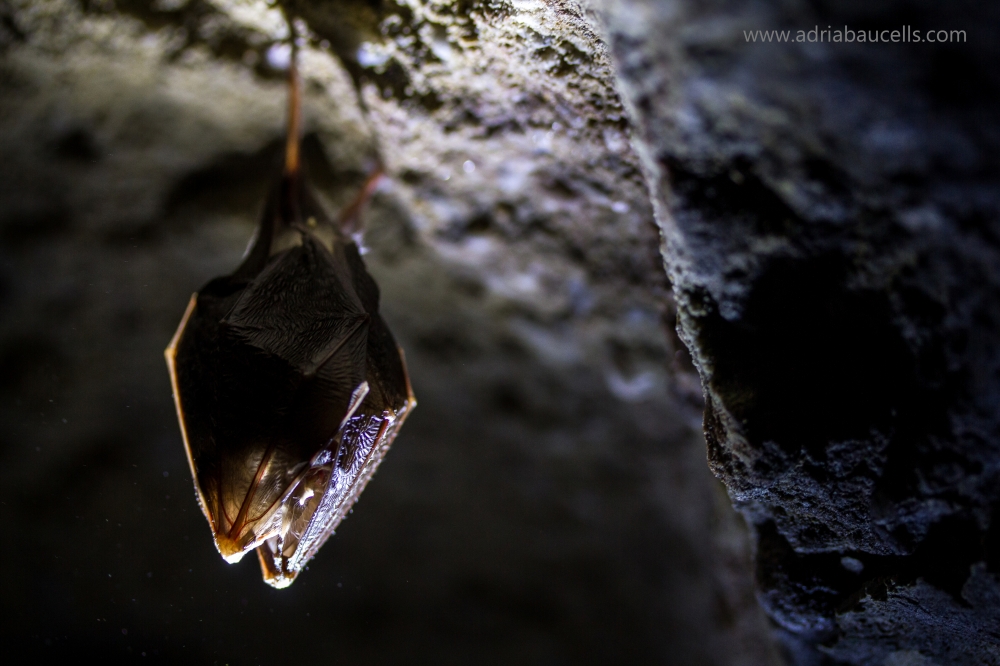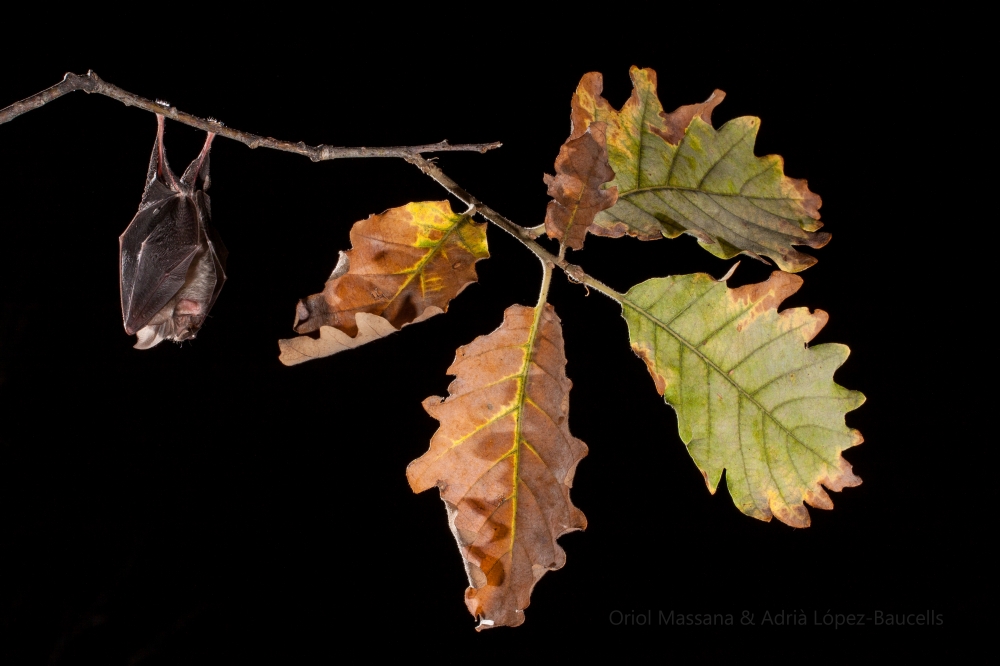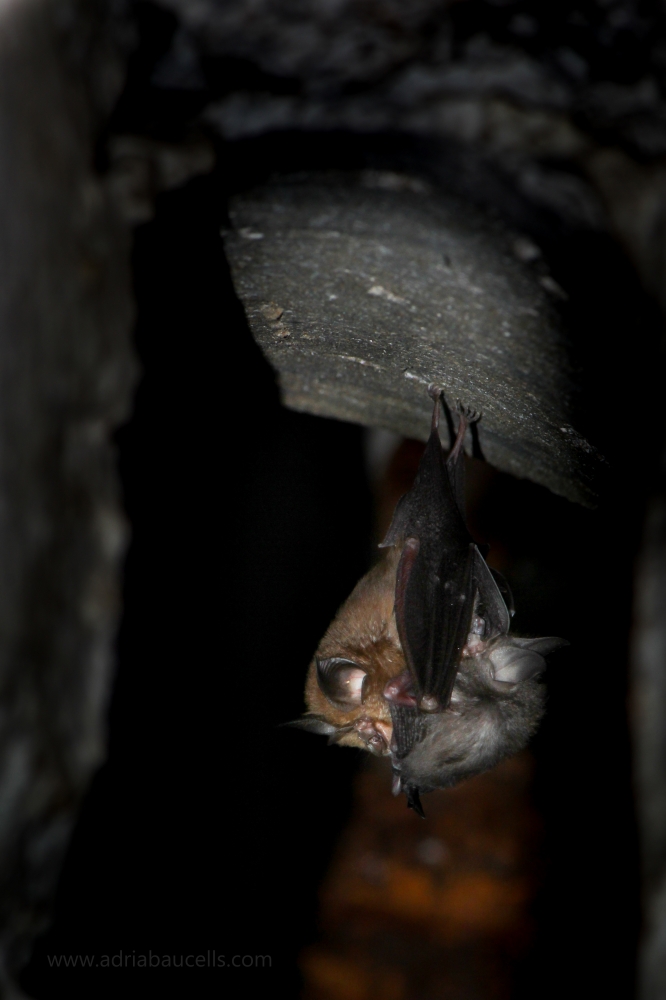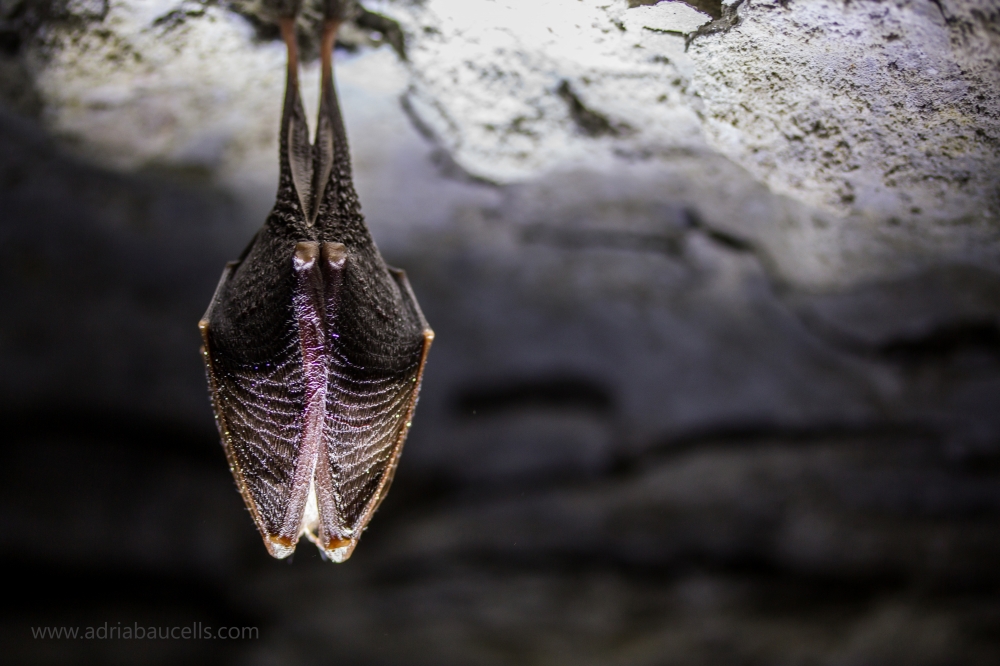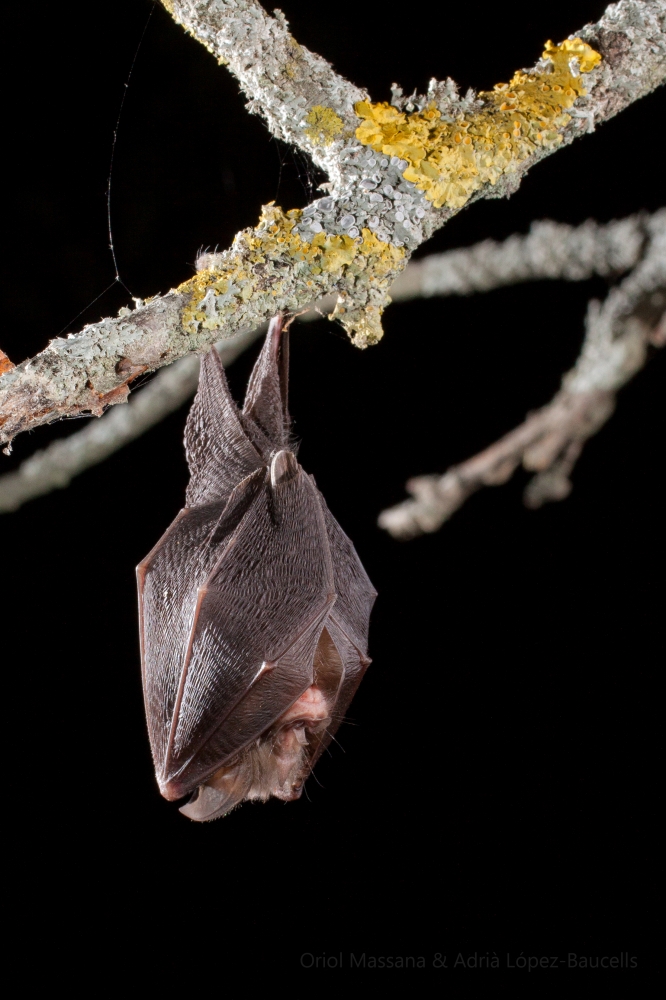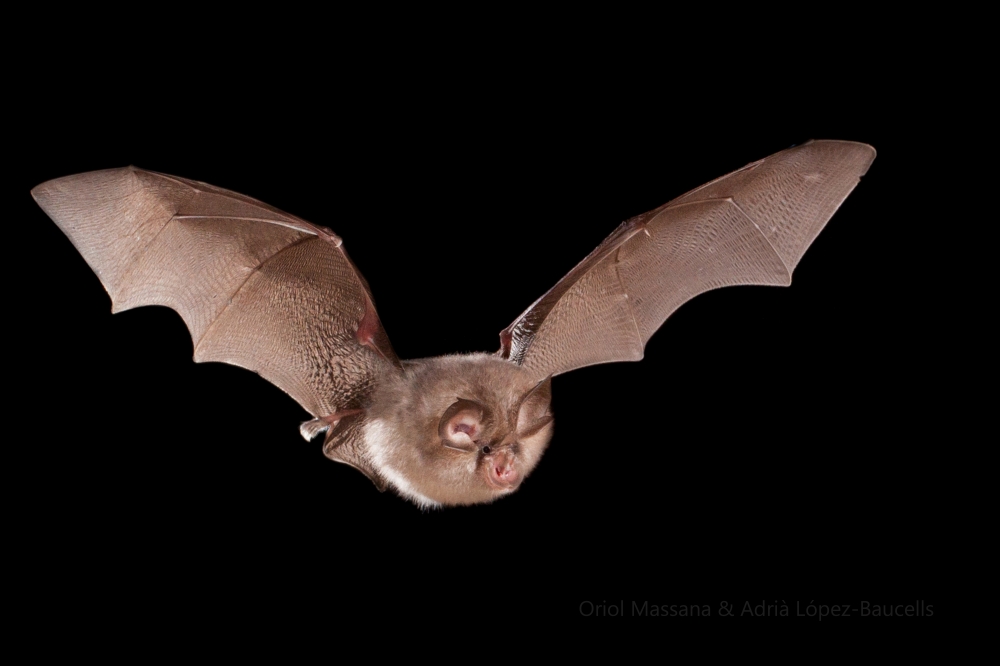Lesser horseshoe bat
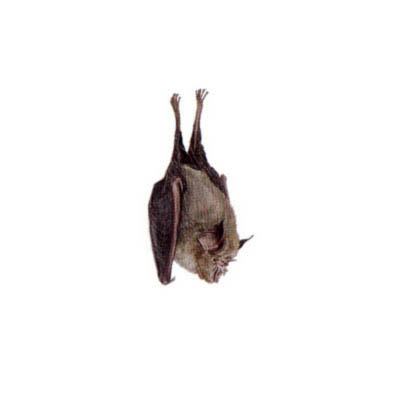
Rhinolophus hipposideros (Bechstein, 1800)
Rhinolophidae
Least Concern
| Other names | |
|---|---|
| Catalan | Ratpenat de ferradura petit |
| Spanish | Murciélago pequeño de herradura |
| English | Lesser horseshoe bat |
| French | Petit rhinolophe |
| Basque | Ferra-saguzar txiki |
| Galician | Morcego pequeno de ferradura |
Description
It is the smallest rhinolophid in Europe, with a head-body length of 36 to 45 mm, a wingspan of 192 to 252 mm, a forearm measuring between 32 and 42 mm, a weight ranging from 4 to 10 g, and a tail between 24 and 30 mm. This species is one of the few that exhibit dimorphism between males and females, with males being larger than females. The nose leaf is narrow and can be used to differentiate them from their counterparts. The ears are relatively long and can measure between 14 and 19 mm. The dorsal fur is grayish-brown, and lighter on the ventral side. Juveniles typically have a more grayish color compared to adults, which tends to be more brownish. The wing membranes are darker than the fur.
Easy to distinguish from its counterparts due to its small size, the most distinctive feature for identification is the nose leaf, with the downward-facing sella longer and more pointed than the connecting process.
Fotografies
Distribution
Its distribution area extends almost throughout Europe, including the Mediterranean islands, bordering to the north with the west of Ireland and England, Germany, the south of Poland, and Ukraine. However, after a significant population decline, it is practically absent from Germany and its adjacent territories. It can also be found in North Africa (Morocco, Algeria, and Tunisia) and in the east of the Sinai Peninsula. It is present in countries in the Middle East, from Turkey and the Arabian Peninsula to Iran, as well as in some regions of Central Asia and western China.
Roosts and phenology
Typically, it seeks refuge in caves (either artificial or natural) and anthropic structures, preferring those close to wooded or shrubby areas. Reproductive colonies consist of groups of 10 to 200 females, rarely exceeding 800 individuals. These colonies form in natural or artificial underground shelters, as well as in old buildings and attics, especially in colder regions. It is rare for males to mix in these colonies. Usually, it has a single pup born between June and July, not reaching sexual maturity until the second autumn.
It is considered a non-migratory species, although it performs short-distance movements between summer and winter roosts. Occasionally, movements of more than 50 km have been recorded, with five known instances exceeding 100 km. In winter, colonies of up to 100 individuals are often found in natural caves.
Habitat and diet
It is a highly adaptable species which is found in a wide variety of habitats. This species thrives in diverse landscapes with forests, shrublands, and meadows, typically located in areas near water bodies. In the northern part of its distribution, it is usually found at lower altitudes, while at lower latitudes, it can be found up to 2,000 meters above sea level.
Its diet consists mainly of small dipterans, hymenopterans, spiders, and crane flies. This species exclusively hunts in the air with an agile flight, similar to that of a butterfly, seeking insects near the shrubby edges of forests and fields. Typically, it hunts within a radius of about 2.5 km from its roost, covering distances of up to 4-6 km. When hunting, it often follows linear structures such as wooded and shrubby edges, avoiding completely open areas.
Echolocation
Like other rhinolophid species, its echolocation features calls with constant frequencies and a duration ranging between 20 and 60 ms. The peak frequency intensity ranges from 108 to 115 kHz. Although acoustically distinguishable in much of its distribution, when in sympatry with the lesser horseshoe bat (Rhinolophus mehelyi), their calls may overlap. In such cases, it is included in the sonotype Rhinolophus hipposideros/R. mehelyi.
Status
According to the IUCN Red List, it is considered Least Concern, indicating a low level of concern for its conservation status, but with a negative population trend. It is protected by national laws, as well as agreements such as the Eurobats Agreement, the Bern Convention, and the European Habitat and Species Directive. In Germany, populations have drastically declined due to the use of insecticides such as DDT, and although populations seem to be recovering, recolonization is occurring very slowly. The main threats are the destruction of roosts, intensification of agriculture and landscape changes, population isolation, and the use of pesticides.
